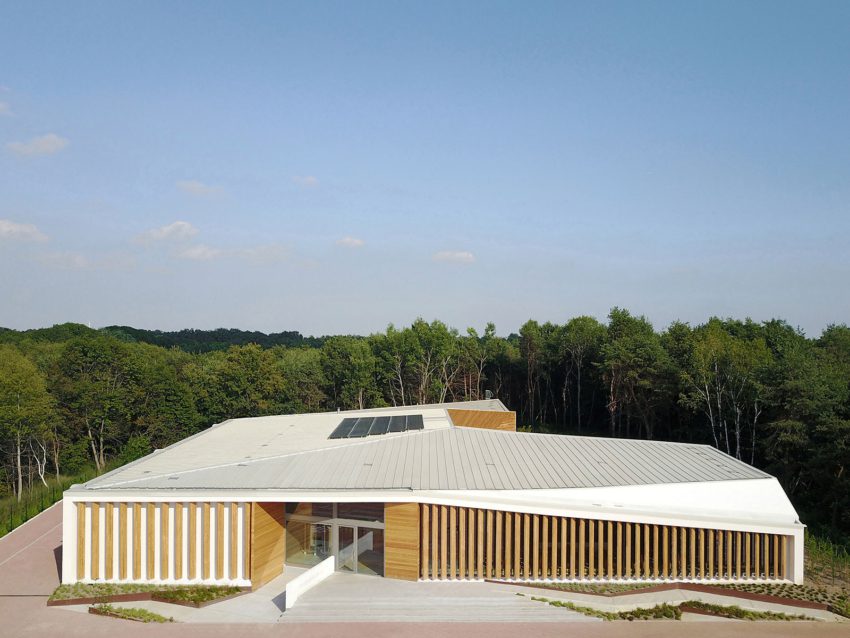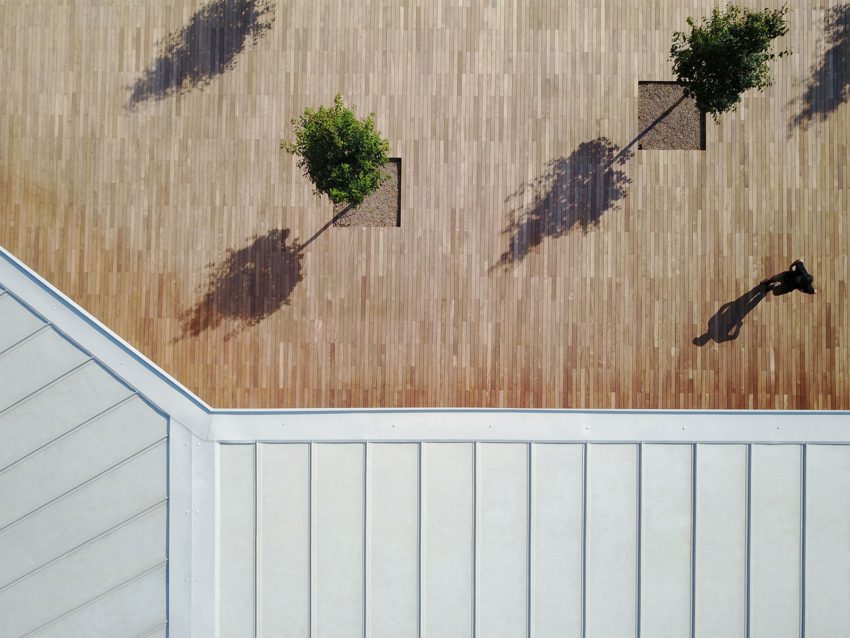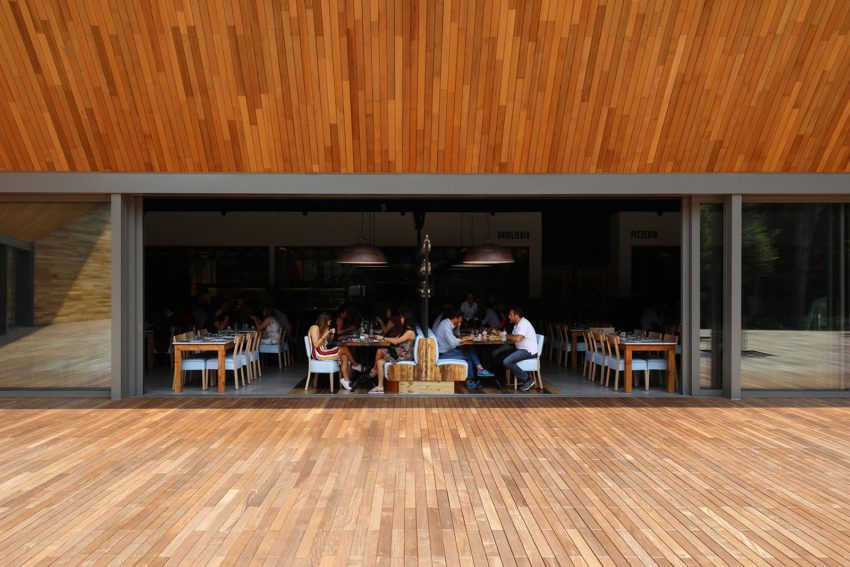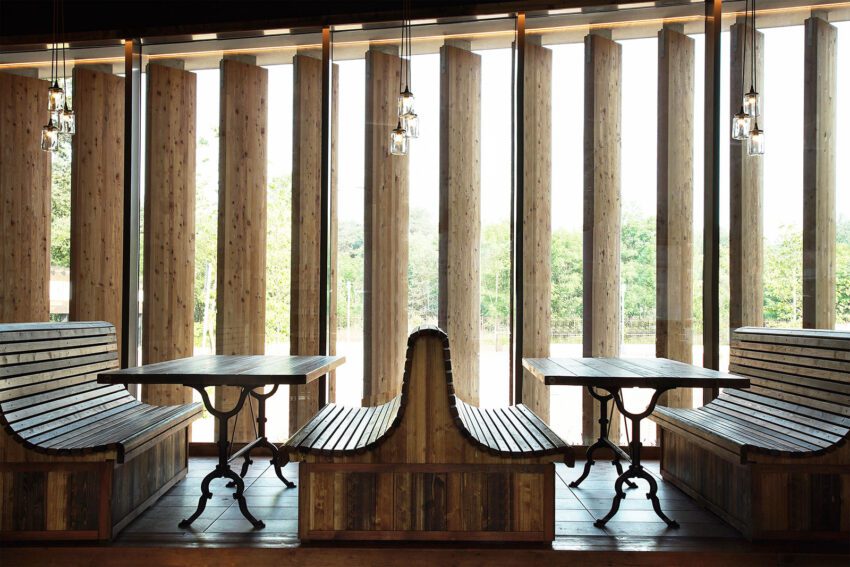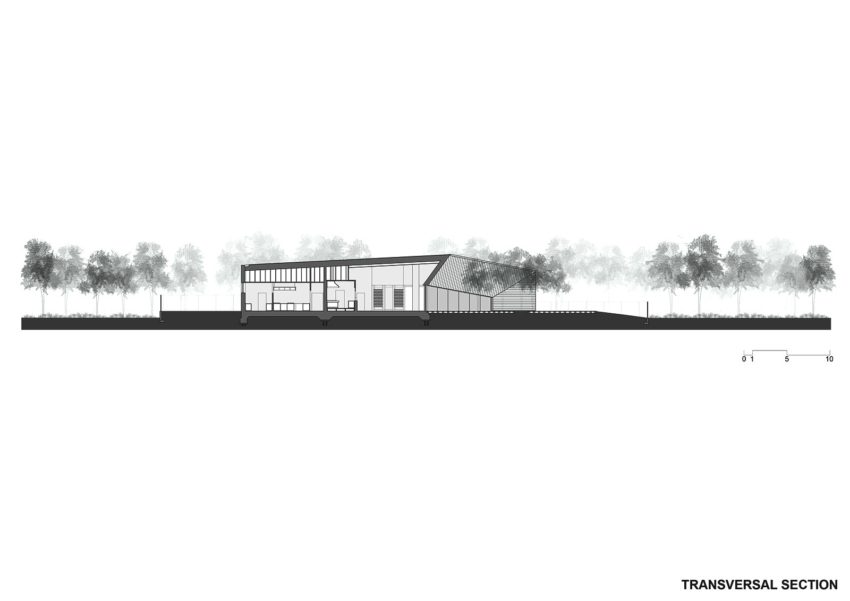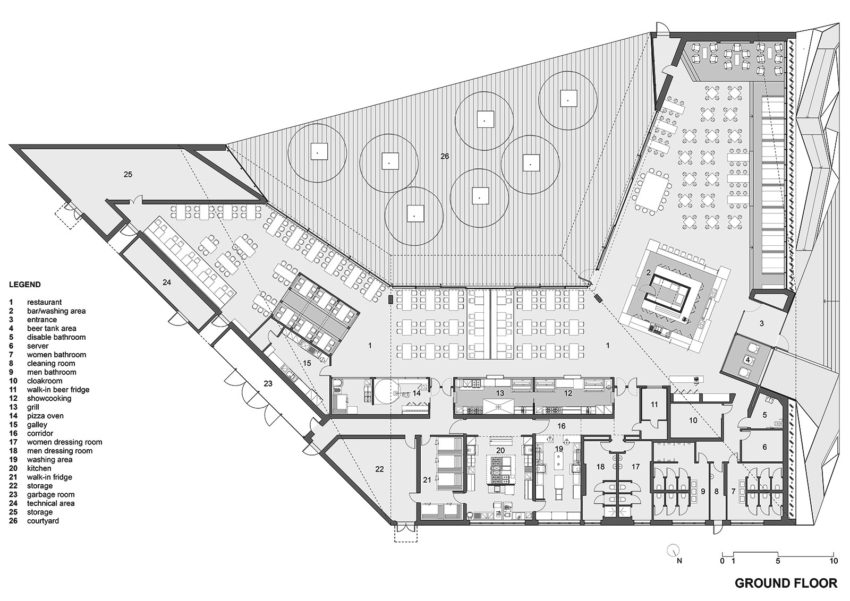The innovative project for WOOD COURT RESTAURANT | Fabbrica di Pedavena Cesate, for which INS Ilaria Nava Studio was selected as an architectural designer in 2015, represents a regeneration vehicle based on the desire to create a leisure location in a woodland of considerable natural importance in terms of both flora and fauna: the Groane Regional Park, North of Milan, Italy.
Wood Court Restaurant Technical Information
- Architects1-5: INS Ilaria Nava Studio
- Location: Parco delle Groane, Cesate (MI), Italy
- Topics: Wood, Restaurant
- Area: 1.580 m2
- Project Year: 2015 – 2018
- Photographs: © INS Ilaria Nava Studio, © Nicolò Galeazzi, © Atelier XYZ
The construction of iconic contemporary architecture in an environmentally protected setting represents an important example of integration between nature and the built environment.
– INS Ilaria Nava Studio
Wood Court Restaurant Photographs
Text by the Architects
The project sets the new building in the most remote part of a 6,700m2 site surrounded by splendid woods and heathland, following the demolition of a pre-existing obsolete building. The construction of iconic contemporary architecture in an environmentally protected setting represents an essential example of integration between nature and the built environment: nature as creator and regenerator becomes the semantic cornerstone of the project, indicating a new relationship of reciprocal respect between architecture, man, and wood.
The architectural space comprises unexpected diagonals that forcefully split the shell, opening its most intimate part – a central concave space exposed to the south – to nature, with the wood insinuating itself into the building. And the building, symbiotically, becomes an enveloping form that protects nature.
Folds and deformations that break up the orthogonal order create expansive prospects that draw the visitor’s eye to connect with nature and discern its profound involvement with the building. The wooden deck becomes the stage for oaks and birch trees.
These external spaces enhance the relationship between man and the power of nature thanks to the design of the specially devised wooden overhangs, a roofing system organized in intersecting planes, which is also a characteristic element of the restaurant interior, like planes that organically glide out towards the heathland.
The generous use of wood in the courtyard, with the red cedar covering and the Ipè wood decking, creates a visual, spatial, and material connection with the woodland. With a western exposure/orientation and parallel to the road, the principal facade is characterized by a set of larch vertical panels that generate a seductive pattern of light and shade at night. These panels, in addition to protecting the internal space from glare, at dusk, provide an acoustic and visual barrier to the road.
The challenging structural project is one of the valuable elements of the building: the pitched roof is devised as a combination of intersecting planes with 20-meter spans.
From a functional and distributive point of view, the restaurant is divided into two blocks: the restaurant-bar block, an open space articulated in three branches to allow separate management of the three areas; the service block, located to the north and east, contains the toilets, staff changing rooms, washing areas, and kitchen, refrigerators, and storeroom.
The challenging structural project is one of the valuable elements of the building: the pitched roof is devised as a combination of intersecting planes with 20-meter spans. This solution exploits the internal spaces to realize a single open space and create long glass facades beneath the extensive overhang of the courtyard. The structure is realized with monolithic reinforced concrete slabs and reticular steel joists that rest on invisible columns and walls in reinforced concrete.
Sustainability, energy efficiency, and well-being are at the very core of the project. Heating and cooling are generated by a geothermal system that uses groundwater to drive a reverse heat pump. The building incorporates a complete air conditioning system with exposed ducts combined with underfloor panels adjacent to the façade to reduce the radiative effect of the external glazing to ensure optimum comfort conditions for clients and staff. The roof has an integrated set of photovoltaic panels that partially supply renewable energy to cover the restaurant’s energy consumption.
The glazing in the external courtyard comprises large fixed and sliding doors that open to create 9 meters of uninterrupted light, bringing together the inside and the outside in a unique, extraordinary sensory space.
Thus, the design vision finds synthesis in the external courtyard that welcomes visitors between wooden surfaces, inclined spaces, the rustle of leaves, and evening dew: it is here where the complete symbiosis between architecture, man, and nature is realized.
Wood Court Restuarant Plans
Wood Court Restaurant Image Gallery
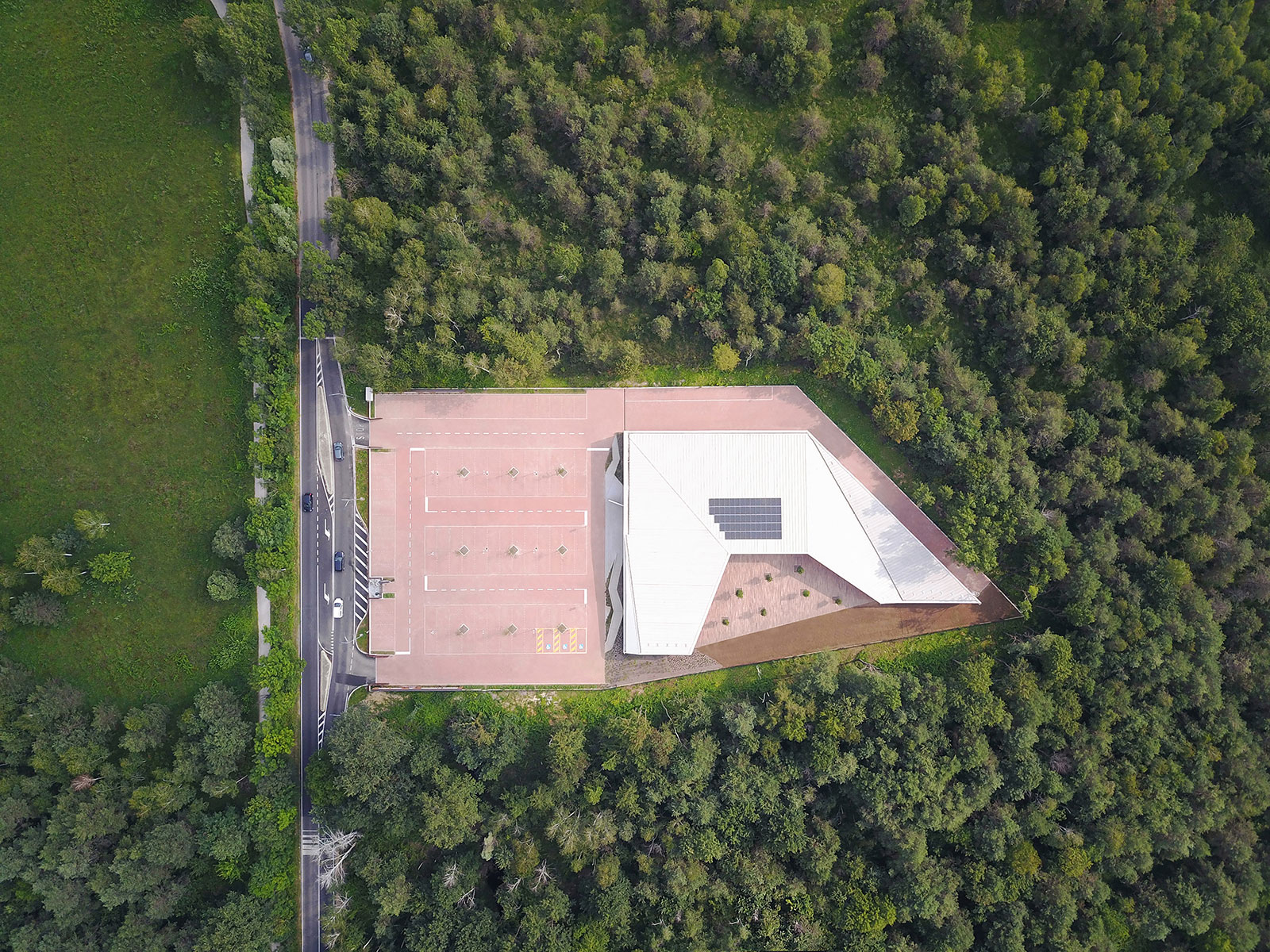
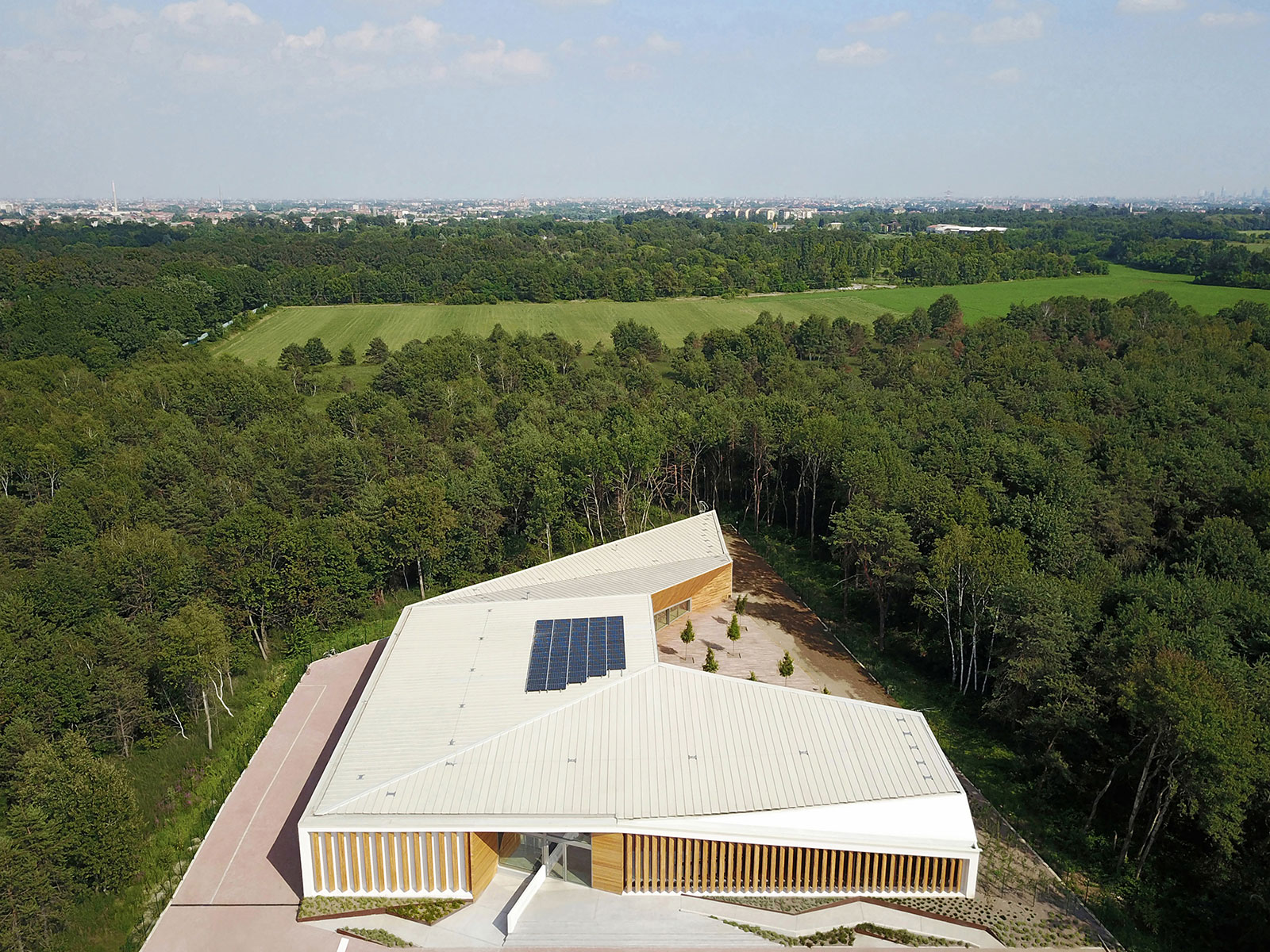




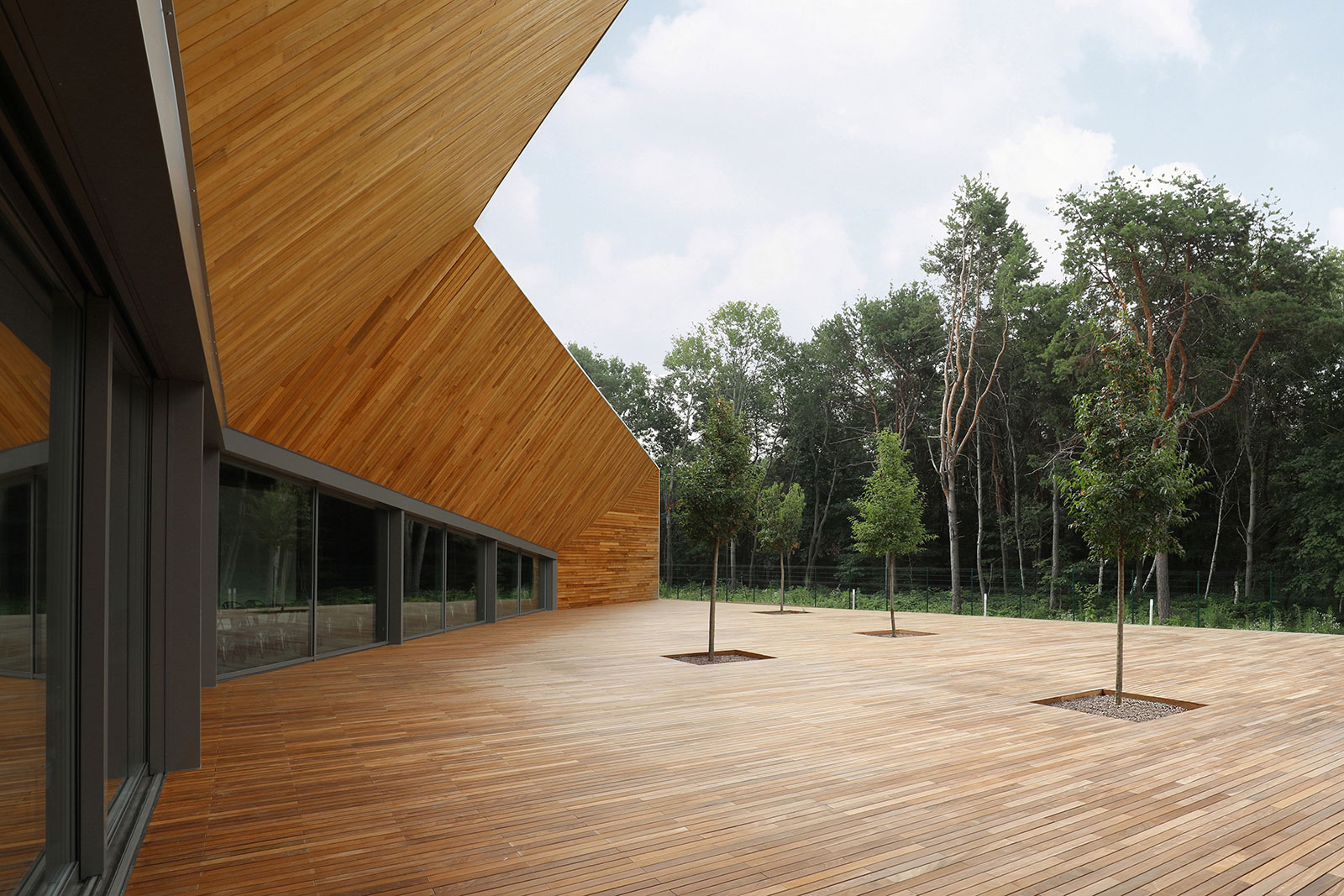
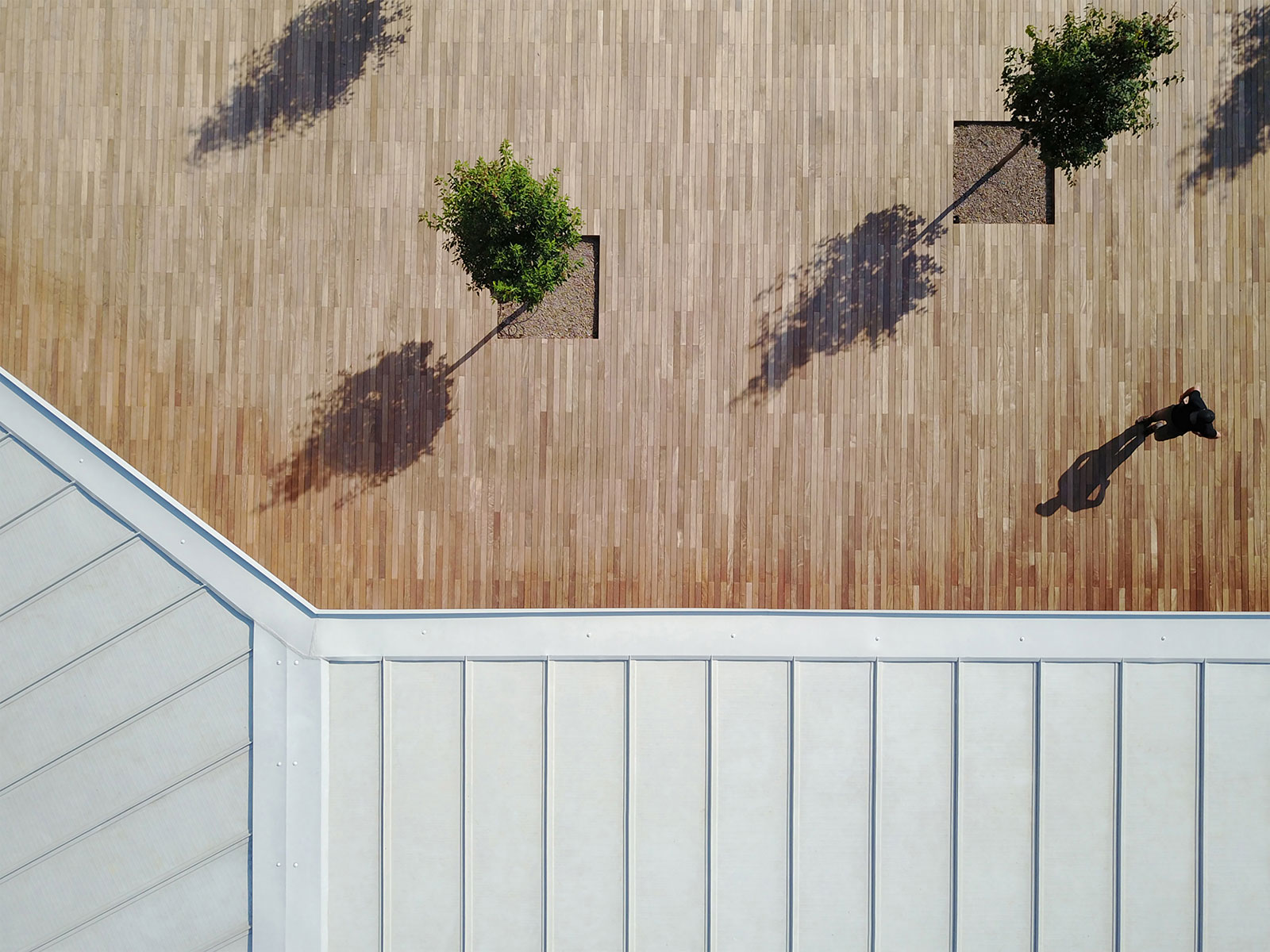
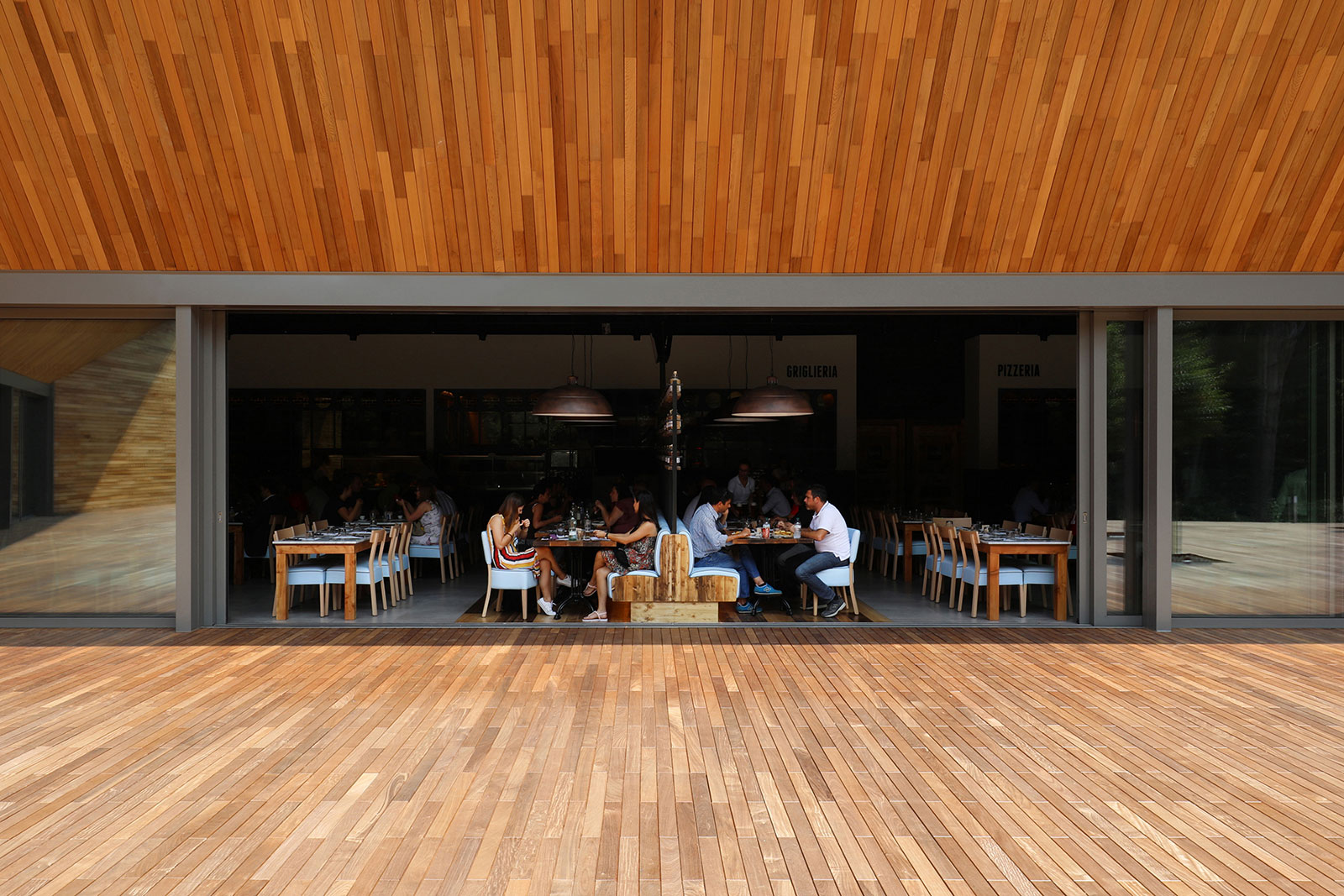
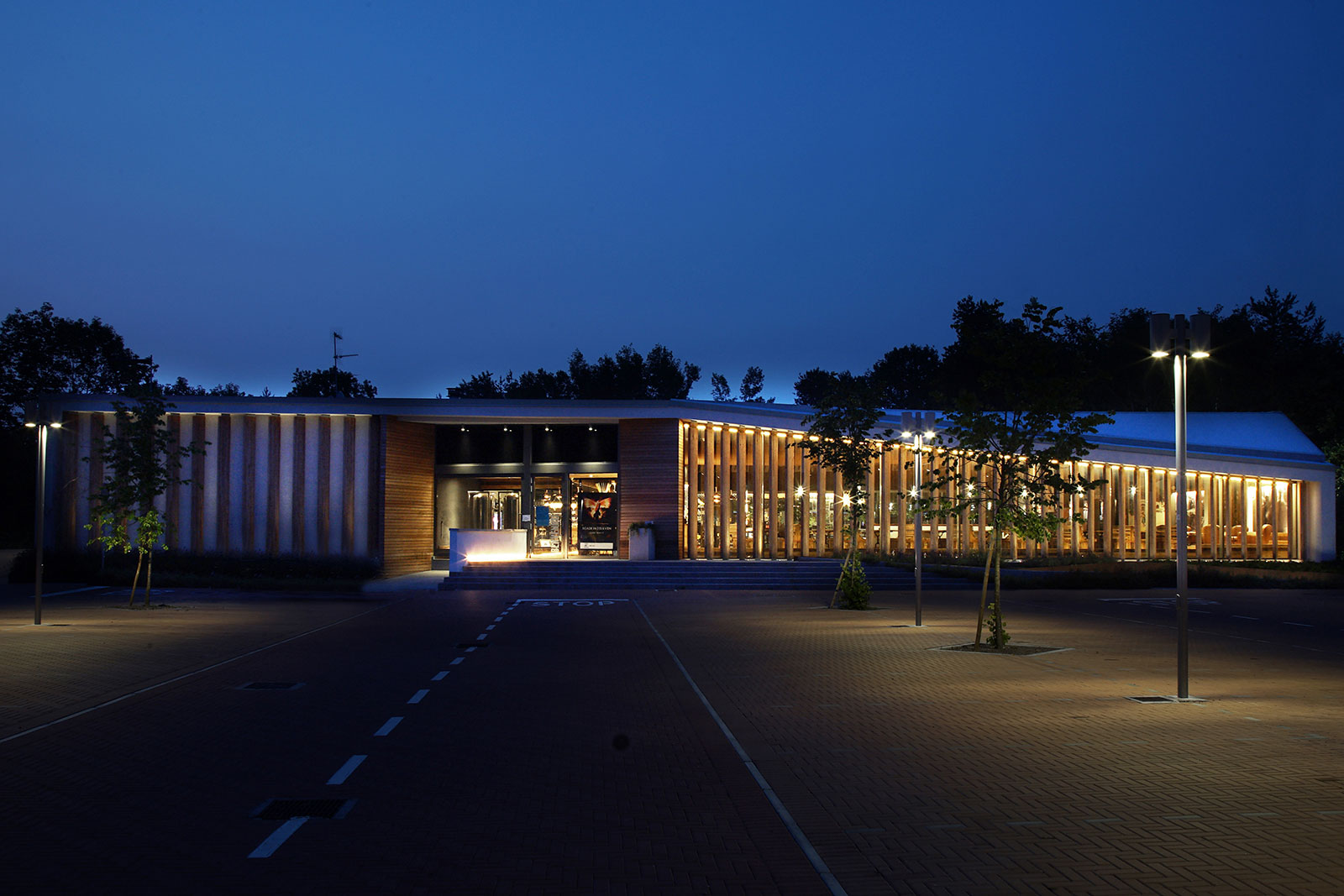

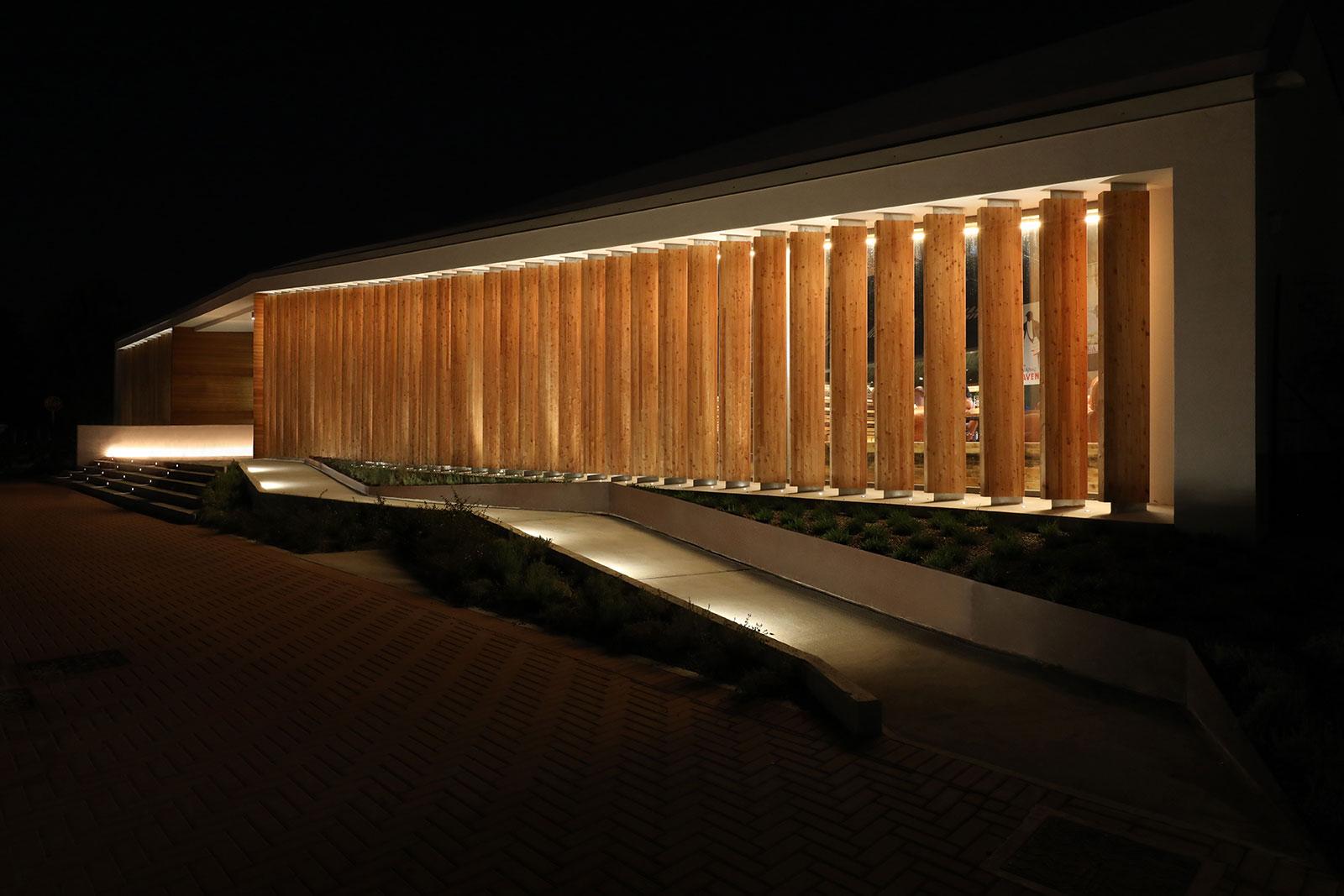
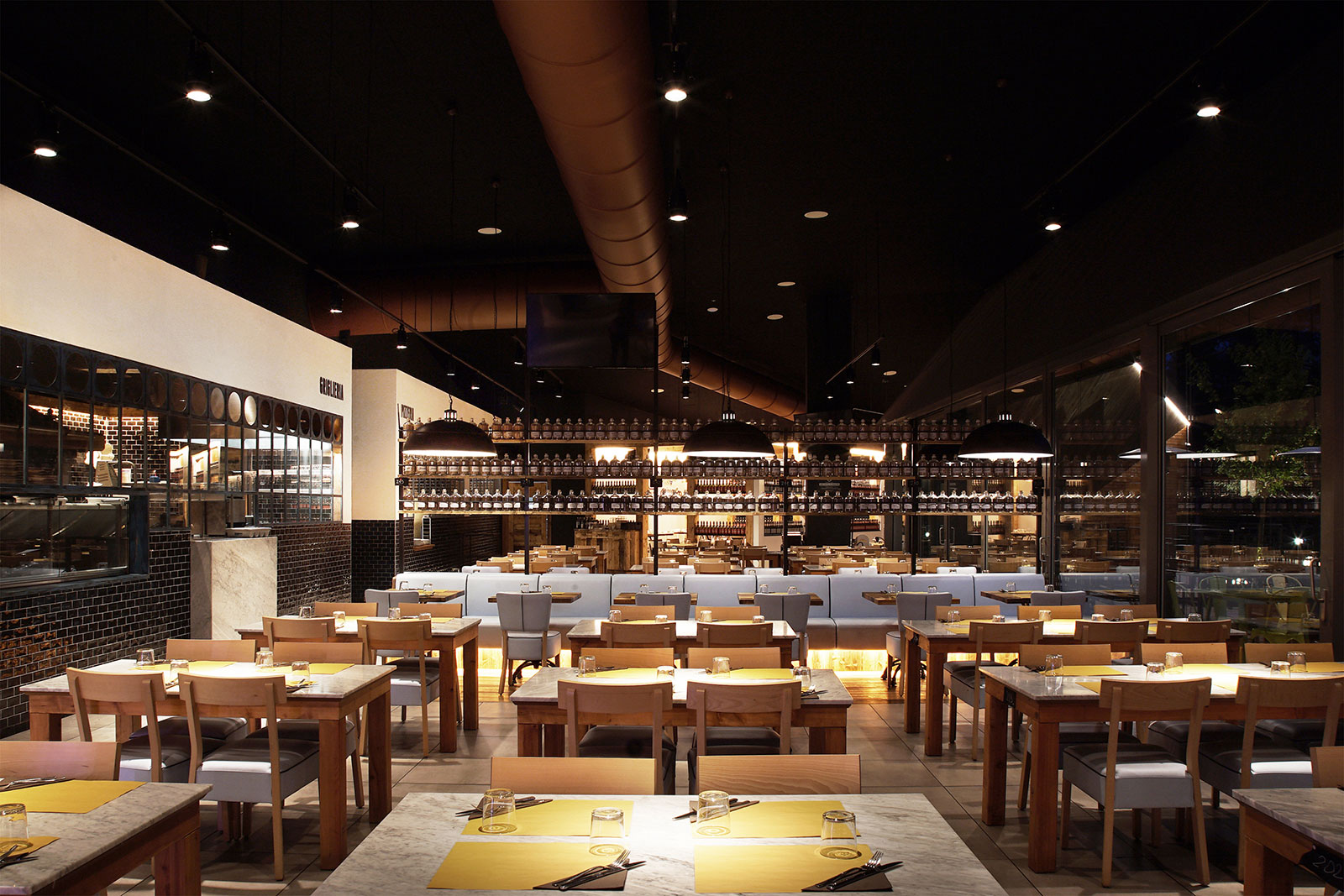
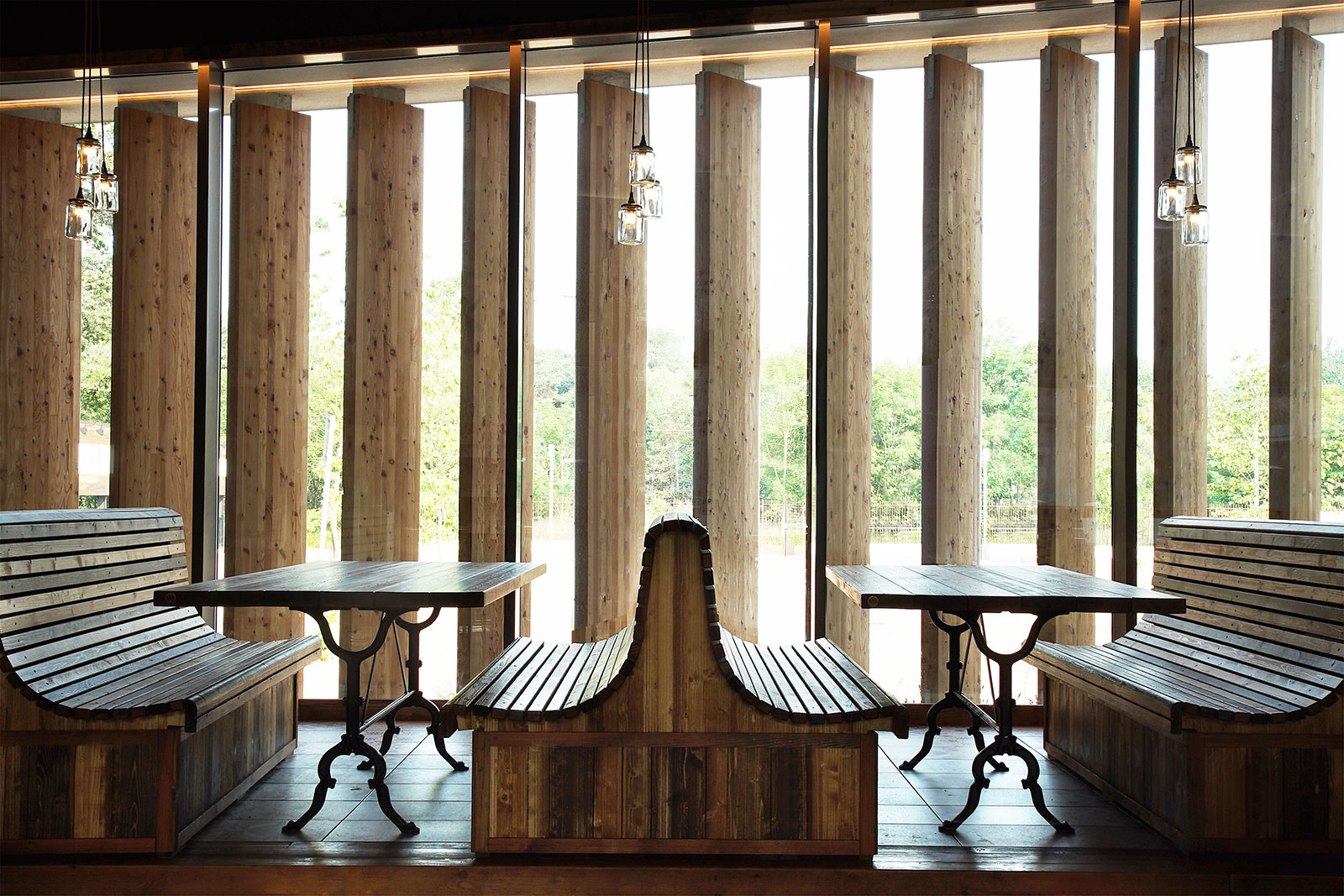
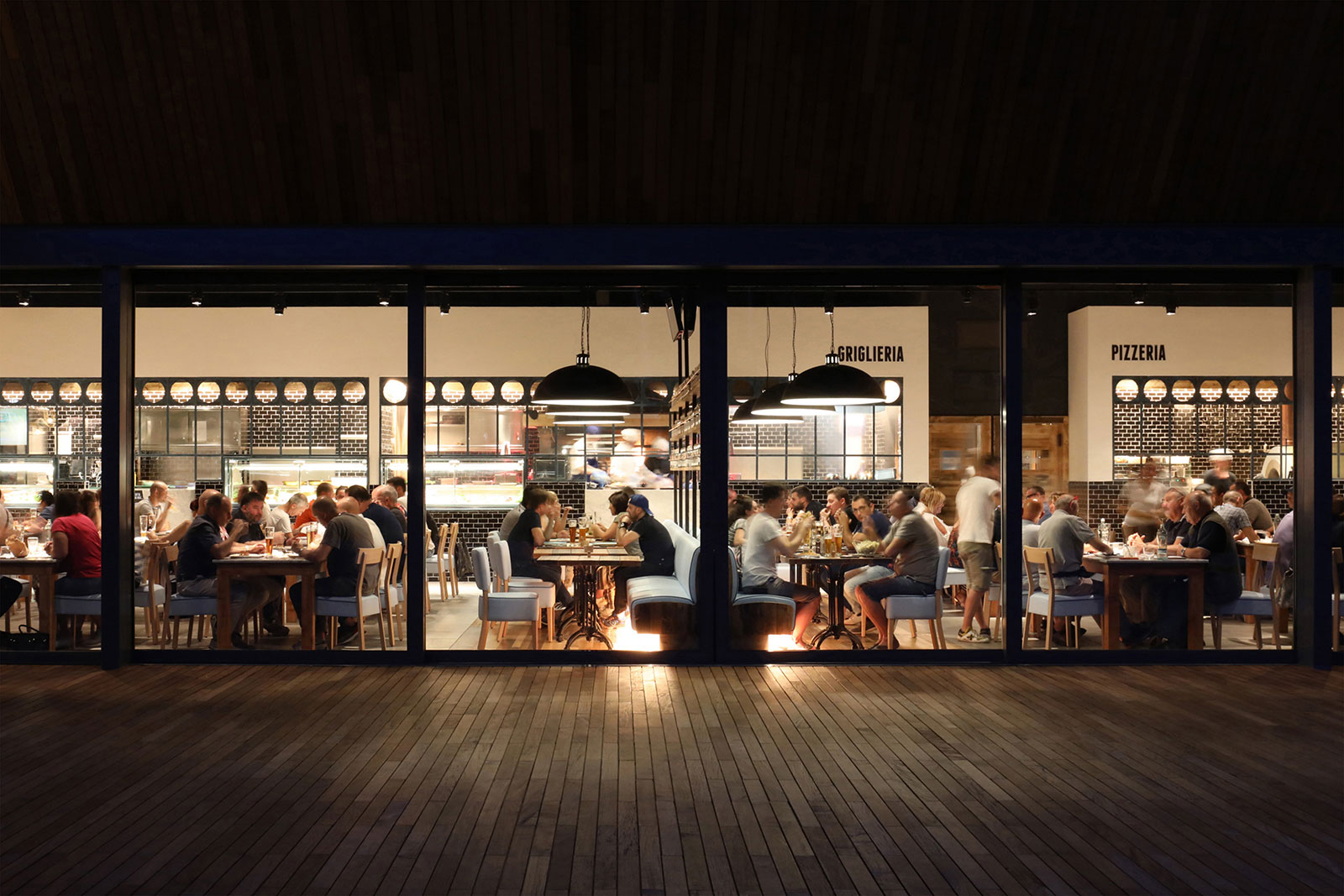
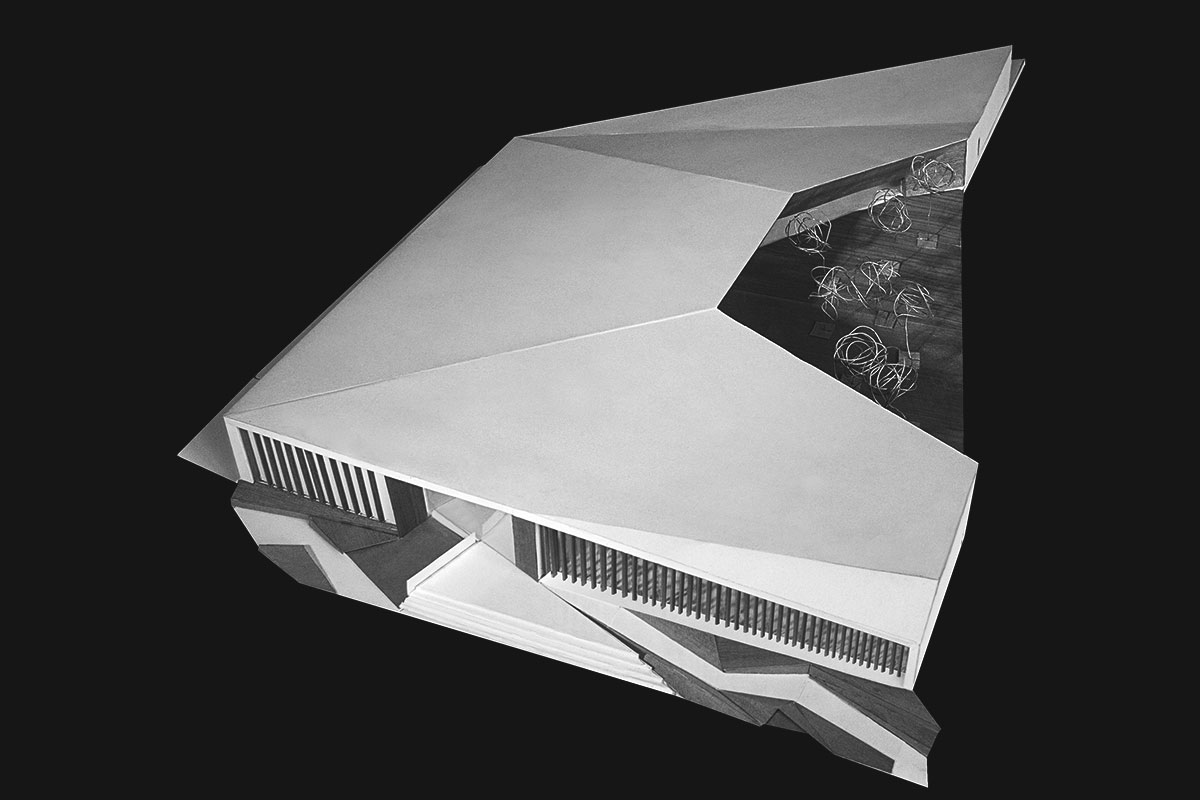
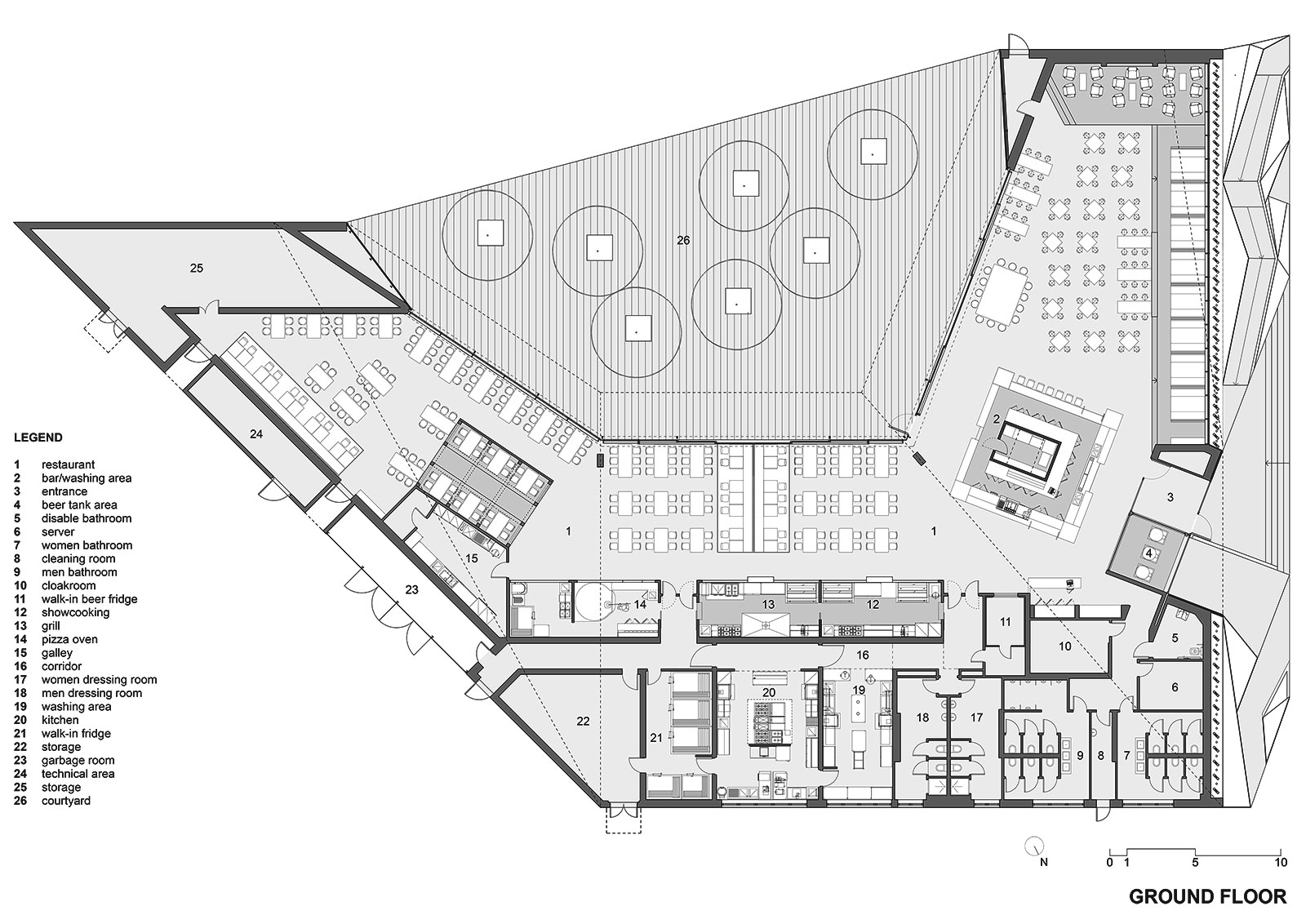
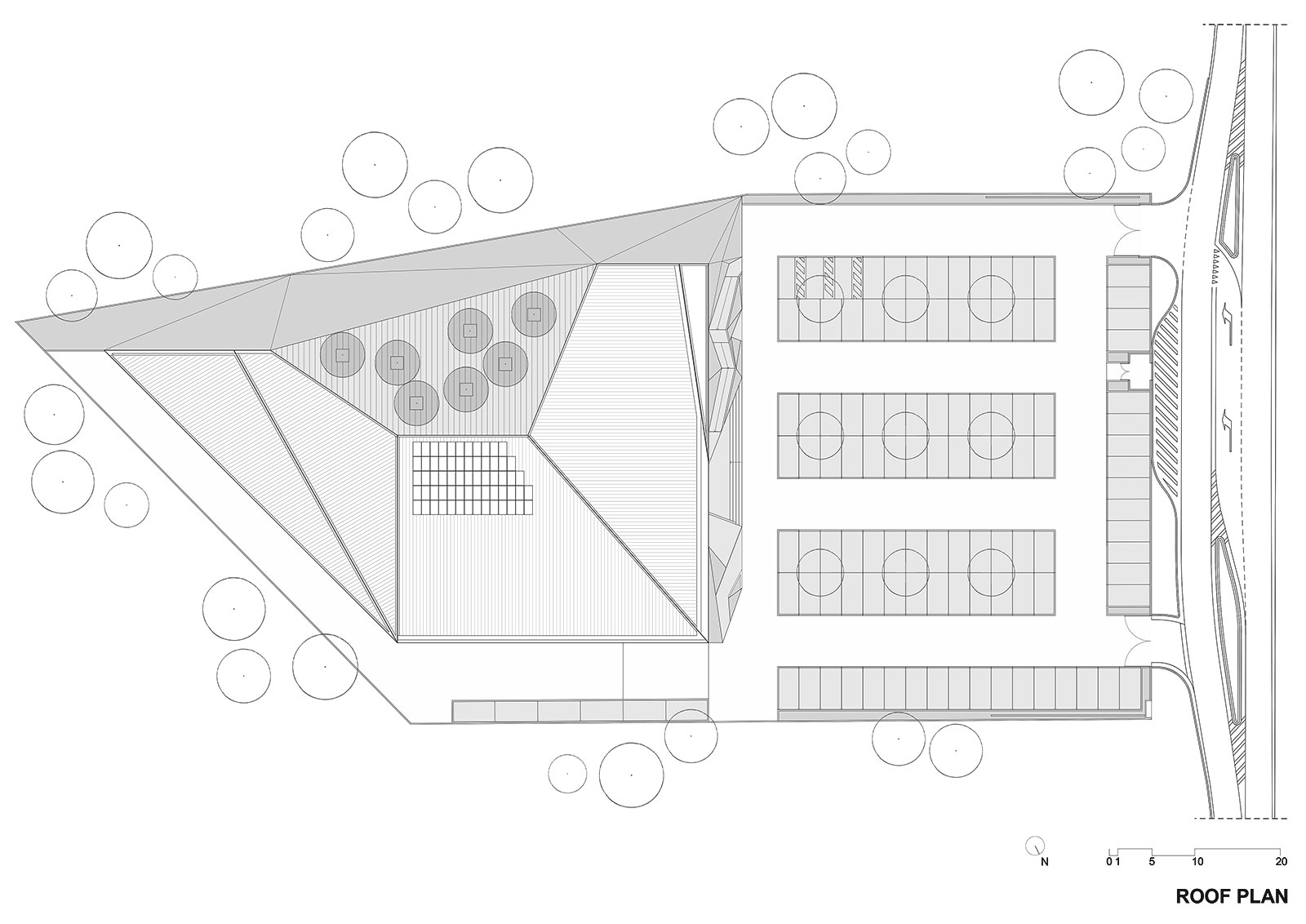
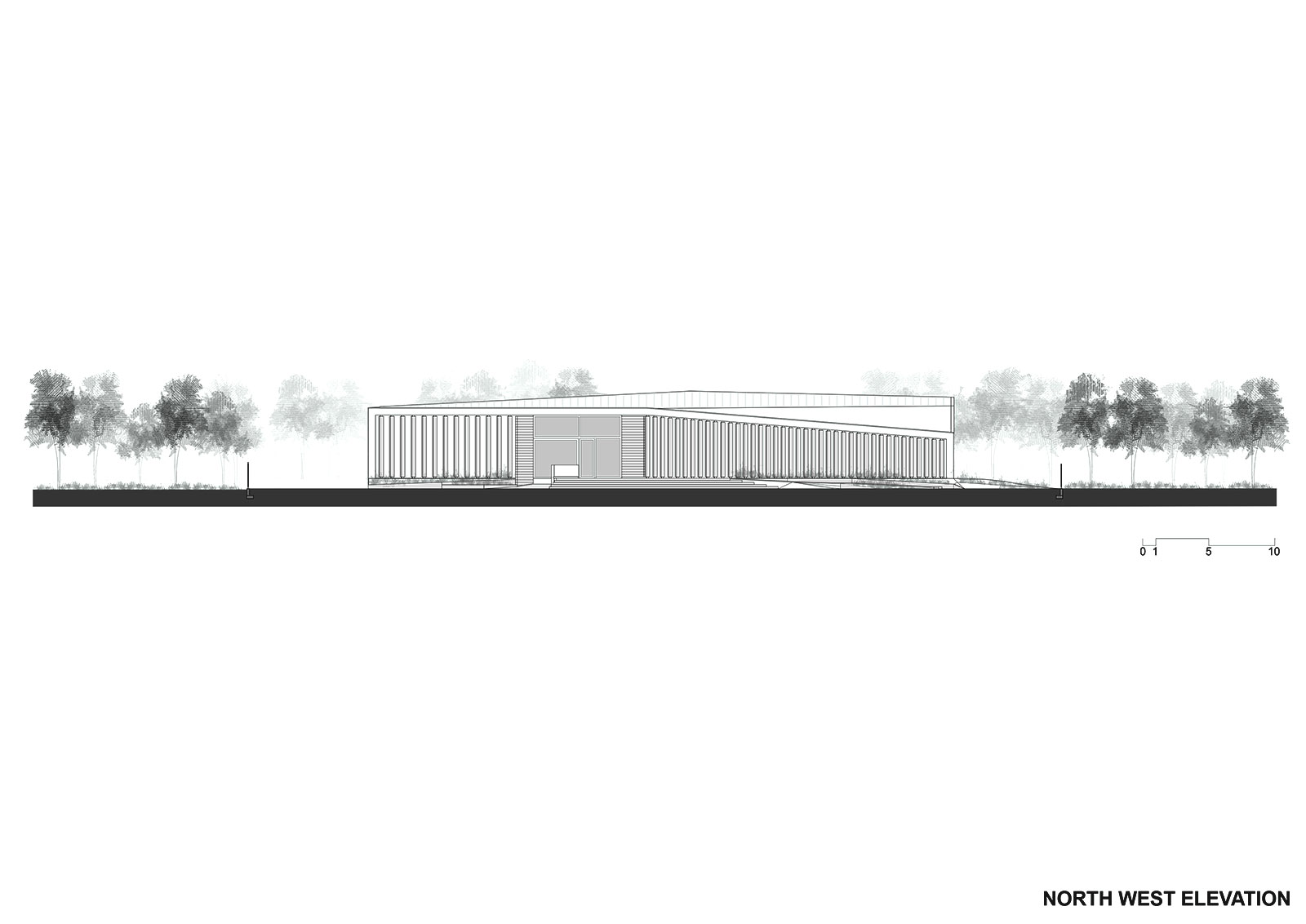
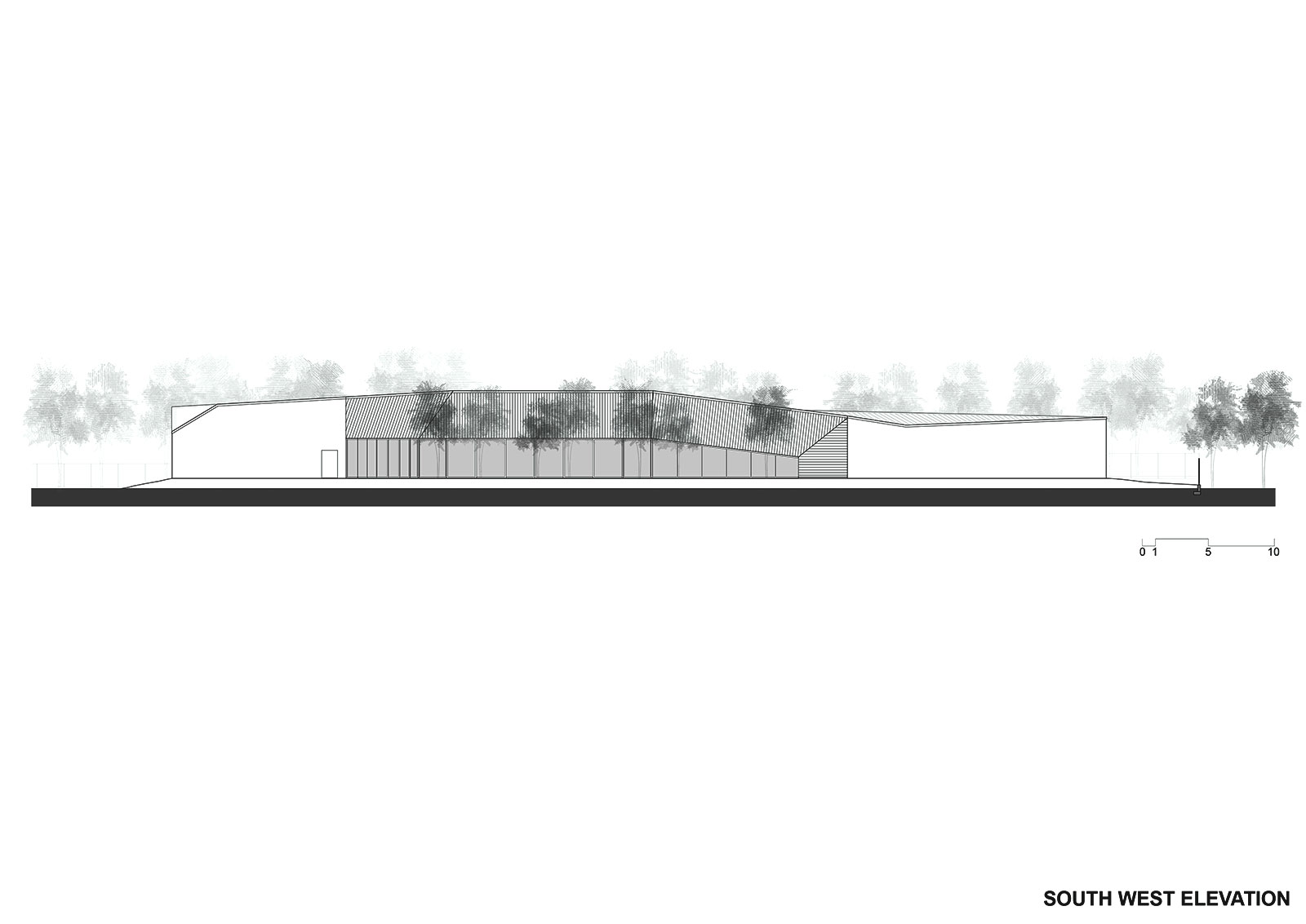


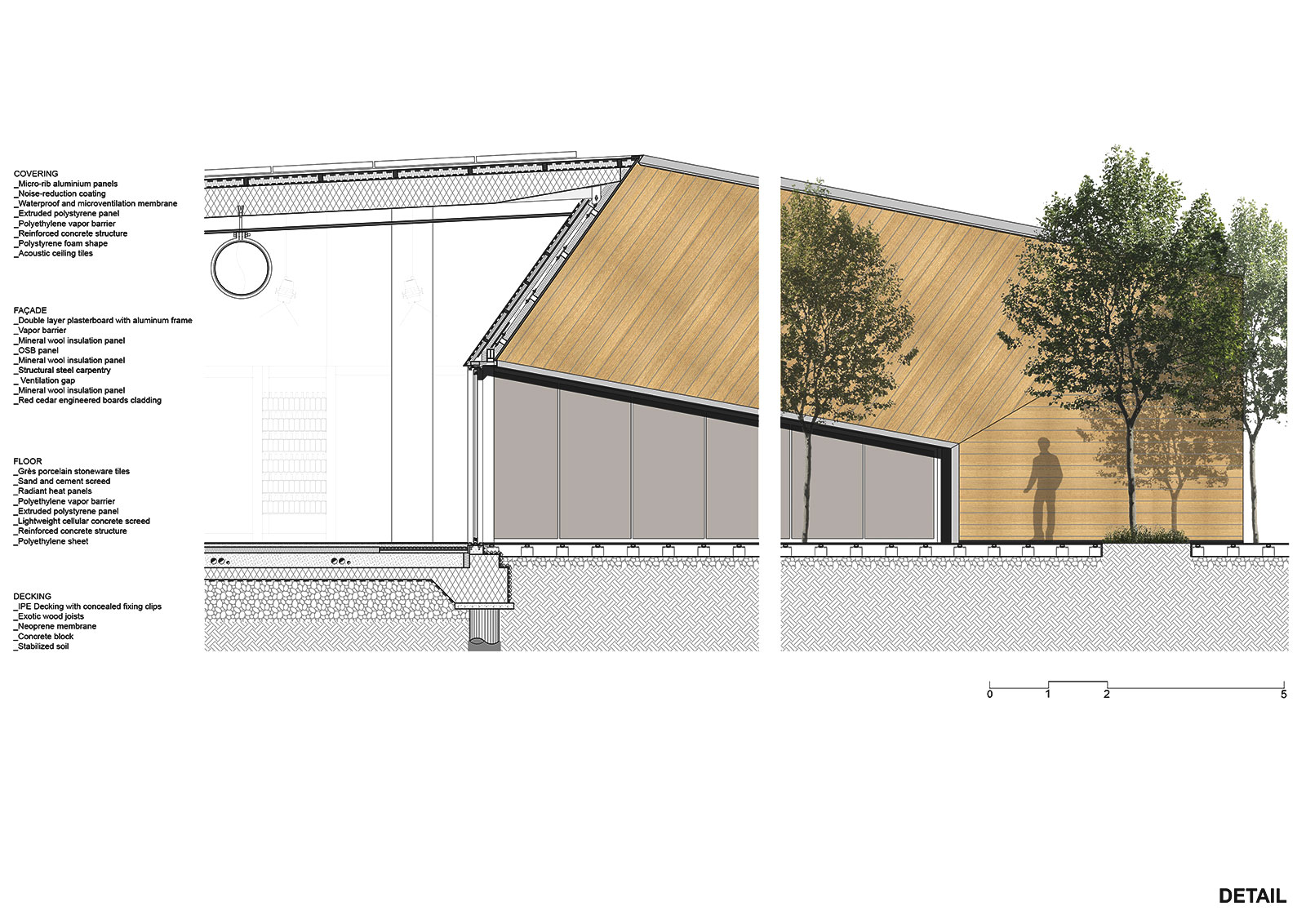
About INS Ilaria Nava Studio
Since 2005 INS Ilaria Nava Studio has developed urban design, architectural, and interior design projects. NS Ilaria Nava Studio explores and works at all scales and in every field connected to the growth of cities and the creation of architectural spaces. We do so through the pursuit of beauty alongside social and political dialogue. The studio works in Europe and Africa, focusing on Ghana and Mozambique, where it has developed wide-ranging knowledge of the human and professional African context.
Other works from INS Ilaria Nava Studio
- Structural engineering: Milan Ingegneria S.r.l.
- Acoustics and building physics: Tecnoprogetti S.n.c.
- Mechanical engineering: NT Engineering S.r.l.
- Electrical engineering: TLC S.r.l.
- Interior, furniture: AP Design


